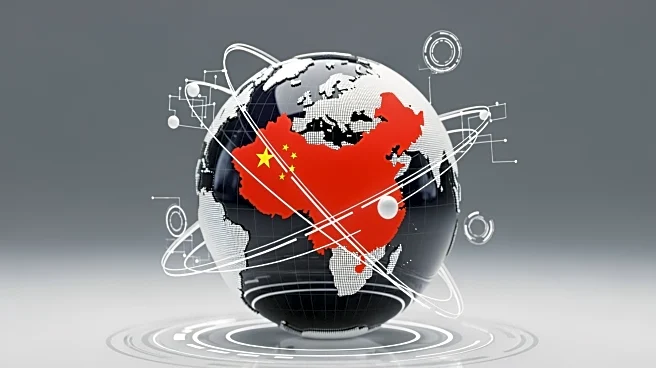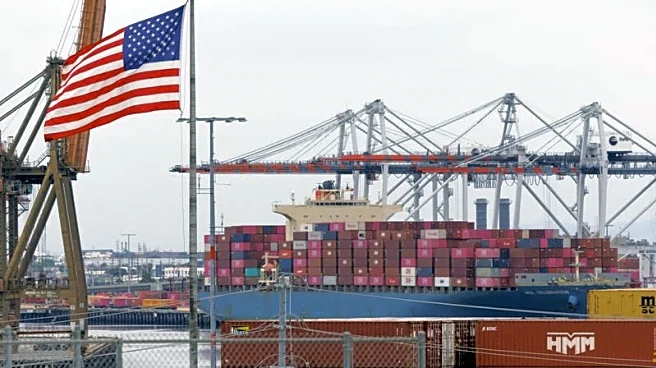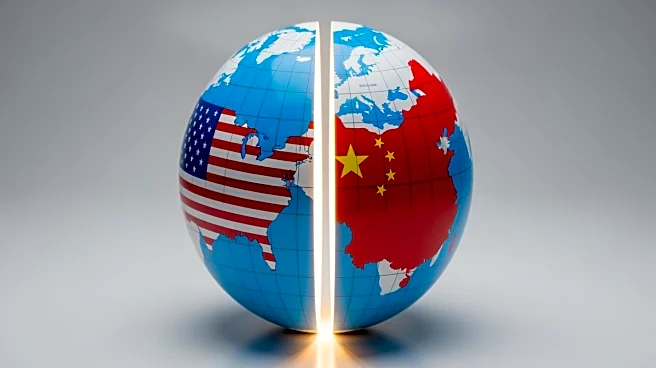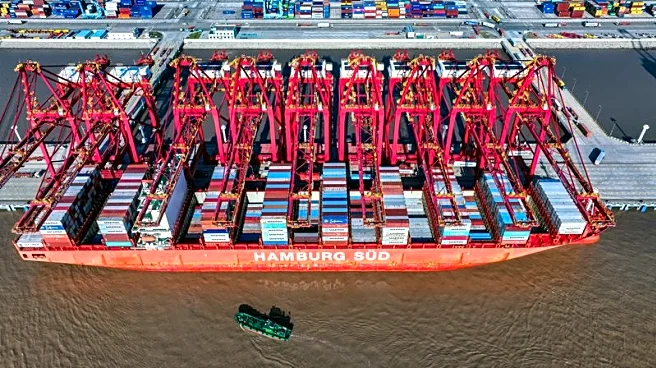What's Happening?
China's ruling Communist Party is convening a significant meeting in Beijing to outline its economic and strategic goals for the next five years. This gathering, known as the fourth plenum, involves key
leaders, including Xi Jinping, and is expected to finalize the country's five-year plan for 2026-2030. The meeting occurs against a backdrop of heightened trade tensions with the United States and internal challenges such as a shrinking and aging population. The World Bank forecasts China's economy to grow by 4.8% this year, close to the official target of 5%. However, the country faces hurdles from the ongoing trade war with the U.S. and domestic issues like high youth unemployment, which stands at nearly 19%. The Communist Party aims to boost consumer spending, enhance technological self-sufficiency, and address overcapacity in various industries.
Why It's Important?
The outcomes of this meeting are crucial for both China and the global economy. China's efforts to achieve technological self-sufficiency and reduce reliance on U.S. technology could lead to increased investment in sectors like artificial intelligence and semiconductors. This shift may impact global supply chains and trade dynamics, particularly with the U.S. and other trading partners. Domestically, addressing economic challenges such as youth unemployment and demographic shifts is vital for maintaining social stability and economic growth. The party's ability to deliver on these goals is essential for its legitimacy and continued governance. The meeting's decisions could influence global economic trends, especially in technology and trade.
What's Next?
The specifics of China's five-year plan will likely be unveiled during the National People's Congress session in March. Observers will be watching for any significant policy shifts, particularly in boosting domestic consumption and technological advancements. The meeting may also result in personnel changes within the Communist Party, which could affect future policy directions. Internationally, the outcomes could influence trade negotiations and economic relations with the U.S. and other countries. Stakeholders, including businesses and governments, will be keenly interested in how China plans to navigate its economic challenges and trade tensions.
Beyond the Headlines
China's focus on technological self-sufficiency highlights a broader trend of decoupling from Western technology, which could lead to a more fragmented global tech landscape. This move may prompt other countries to reassess their technological dependencies and strategies. Additionally, China's demographic challenges, such as an aging population, could have long-term implications for its labor market and economic growth. The country's approach to these issues will be critical in shaping its future economic trajectory and its role in the global economy.












